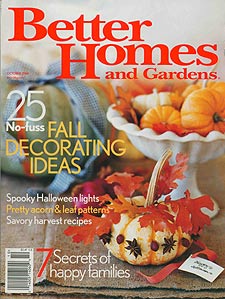
As featured in the October
2004,
Better Homes and
Gardens.
Serene in the City
A SELF-TAUGHT MINNESOTA
GARDENER COMBINES |
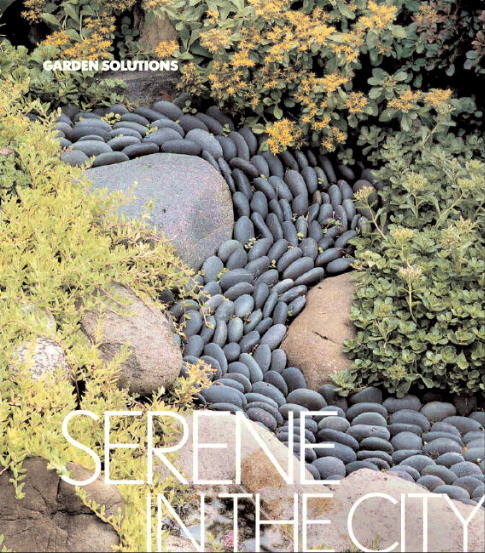
An assortment of creeping Sedum acre and Sedum kamtschaticum, seem to dance along the banks as Mexican river stones flow through the heart of Jim Handtmann's tranquil Minneapolis garden. |
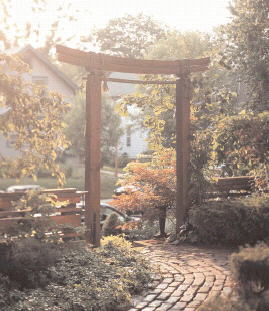
To the list of proven techniques for creating a stunning
landscape, add this one from Minnesota gardener Jim Handtmann: squinting.
"I'll stand in a corner of my yard, take my glasses off, and I squint," says
Jim, who over nine years has transformed a rectangular flat yard in northeast
Minneapolis into an eclectic Japanese-inspired garden. "Squinting makes
everything a little fuzzy, and is particularly effective at night. You're
not thrown off course by small detail. All you detect is shapes." |
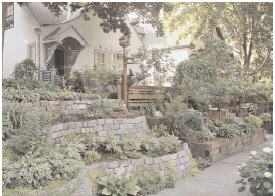
"With smaller yards people get tricked into thinking they're stuck with flat," Jim says. "You're not. Soil can be brought in, or dug from one area and moved to another. You can add boulders and walls and raised beds. If you try to fake it with tall plants, most of that height goes away in the winter." |
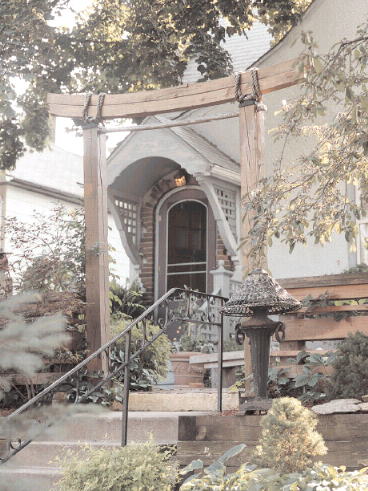
In 1991, when Jim purchased the 1920's one-story
home, the yard was dominated by, in his words, "bad grass." Three overgrown
junipers and a lone rhododendron were the extent of the front foundation
planting. A large hackberry tree in the backyard had such a dense canopy
that during rainstorms Jim could remain outside for 10 minutes before getting
wet. His renovating priorities were in the house, however, and he felt no
urgency to make outdoor upgrades. |
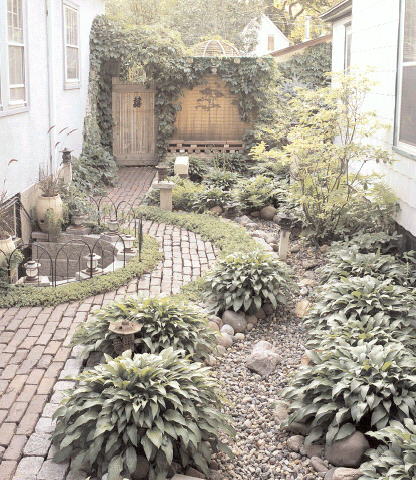
With a newfound appreciation of nature, Jim turned
his attention to beautifying his yard. Installing a basement egress window
that year left him with a hefty four yards of soil -- and no place to put
it. So he created his first garden feature, a three-tiered waterfall built
from scrounged railroad ties that rose from the center of the back yard.
"It came out looking really stupid, but I just kept adding plants and rocks."
Entirely self-taught, Jim deduced intuitively that natural stone, shrubs
and small trees -- not flowers -- were essential for forming the structural
bones of his fledgling landscape. |
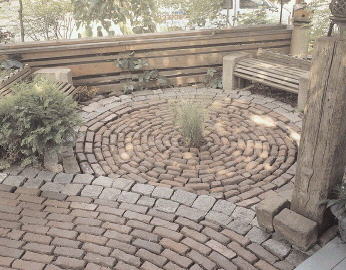
Striking contrasts in plant form, as well as in the color and texture of foliage, create endless points of interest throughout the enclosed backyard. Jim's use of multiple hardscape materials -- recycled wood planking, cobblestones, field stones, quarried wall stone, and salvaged brick -- adds to the diversity. |
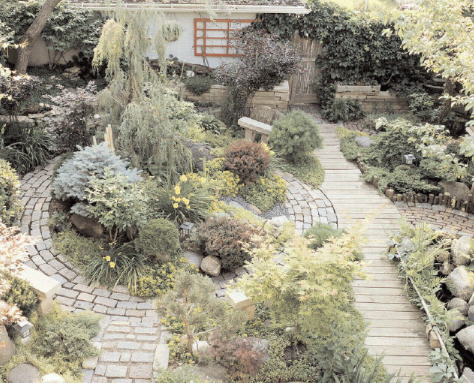
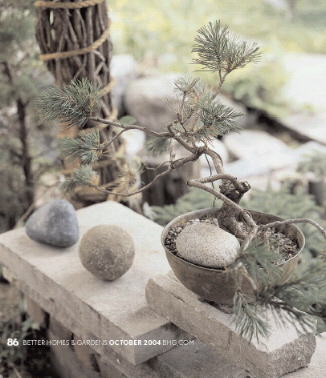
A dry-stack stone wall displays a new bonsai project. True to his style, Jim is learning the art of bonsai through hands-on experimentation. "Gardening classes aren't necessary," he says. "Besides, it's more fun to simply jump in and start figuring it out for yourself."
|
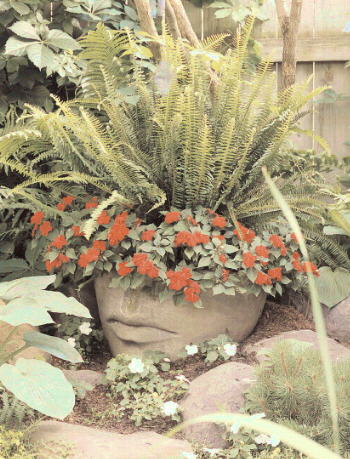
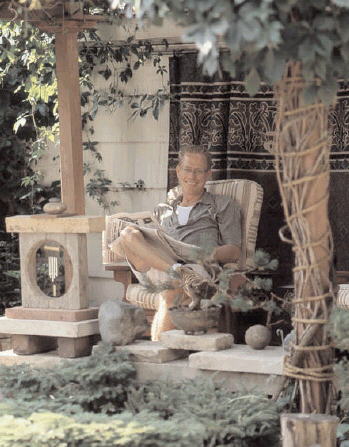
Hands-on experience is the source of Jim's knowledge of garden design, and he willingly shares the lessons he's learned. "Realize the importance of hardscapes as visual elements," he advises. "Things like pathways, walls and fences, outcroppings, containers, garden edgings. Work with the shapes of plants, not just height and color. More importantly, do it yourself, experiment, get in there and get your hands dirty." And after a day of progress in the garden, don't forget to step back and squint. |
Contact:
jim@jimhandtmann.com